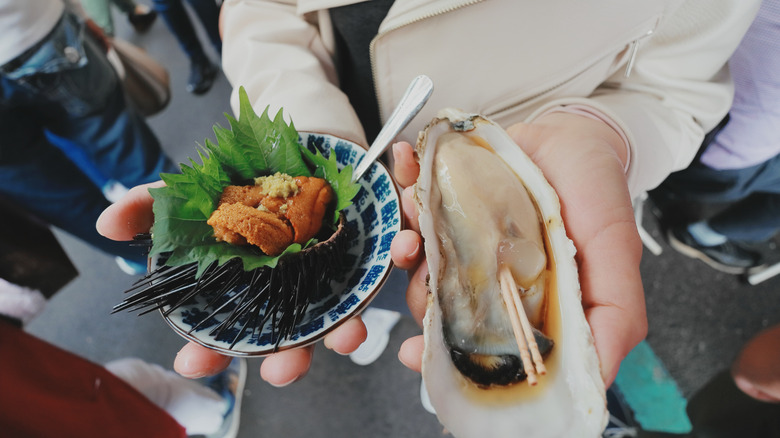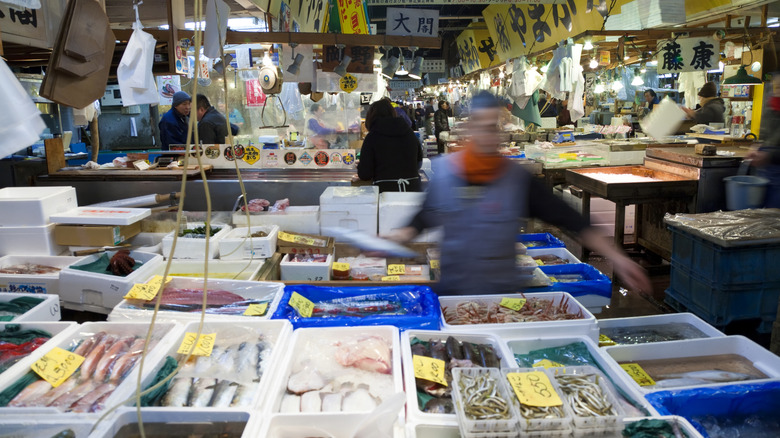Japan's Bustling Seafood Market Offers Fresh Giant Oysters And Unique Local Delights
Pink hunks of salmon. Raw bluefin tuna steaks. Coiled octopus tentacles. Spiny sea urchins. Wide-eyed smelt. Glistening eels. Mackerel, with their patterned backs. Silvery bonitos, fins and all. In Japan, this is the stuff that dreams are made of — huge crates of seafood, ready to weigh and cook. Before it turns into glazed salmon entrées, finely cut sashimi, or a poké-like bowl of takkadon, you have to find freshly caught seafood in the market. And no place is more respected than the Tsukiji Fish Market in Tokyo. Located near the old port — about one mile from the famed Hamarikyu Gardens — Tsukiji contains about 400 different shops, which sell just about every kind of North Pacific seafood imaginable.
One favorite: giant oysters, which are served raw and can barely be swallowed in a single gulp. Even oyster enthusiasts are often surprised at the size of these shells, which can have the circumference of salad plates. It's perfectly normal to watch people walking around with these pulpous beauties, sucking them down with the aid of chopsticks.
Browsing these stalls is one the best things a first-time visitor to Tokyo can do, especially if you already have a taste for Japanese cuisine. Japan is an island nation, of course, and the local tradition of saltwater fishing is likely as old as human settlement. On average, each person in Japan consumes nearly 50 lbs of seafood each year, and many dietitians credit the healthy properties of fish (omega-3 fatty acids in particular) with the conspicuous longevity of Japanese people. Health benefits aside, restaurant favorites like sushi rolls and seafood ramen have become all the rage in the West, and travelers won't find a better place to browse the bounty of the sea than Tsukiji Fish Market.
A century of fishmongers at Tsukiji
Tsukiji's origins are a story of tragedy and triumph. The Great Kanto Earthquake of 1923 reduced a great portion of Tokyo to rubble, including the former fish market. The city then built Tsukiji, which survived World War II as well as rampant development efforts throughout the 20th century; today, much of the architecture on these blocks is about a century old. For decades, Tsukiji was a stomping ground for wholesalers, and few regular people would shop here. The atmosphere has changed, thanks to the "Outer Market," a ring of stalls around the original complex that sell all kinds of produce, from fish to veggies to bags of rice.
Most travelers won't have access to a kitchen, so a visit to Tsukiji is more about the heritage and ambiance than actually shopping for shrimp and squid. But the market is also home to several sit-down restaurants and windows that serve prepared meals, making this a district-wide buffet for street-food fans. Just remember to use that wet towel before digging in.

